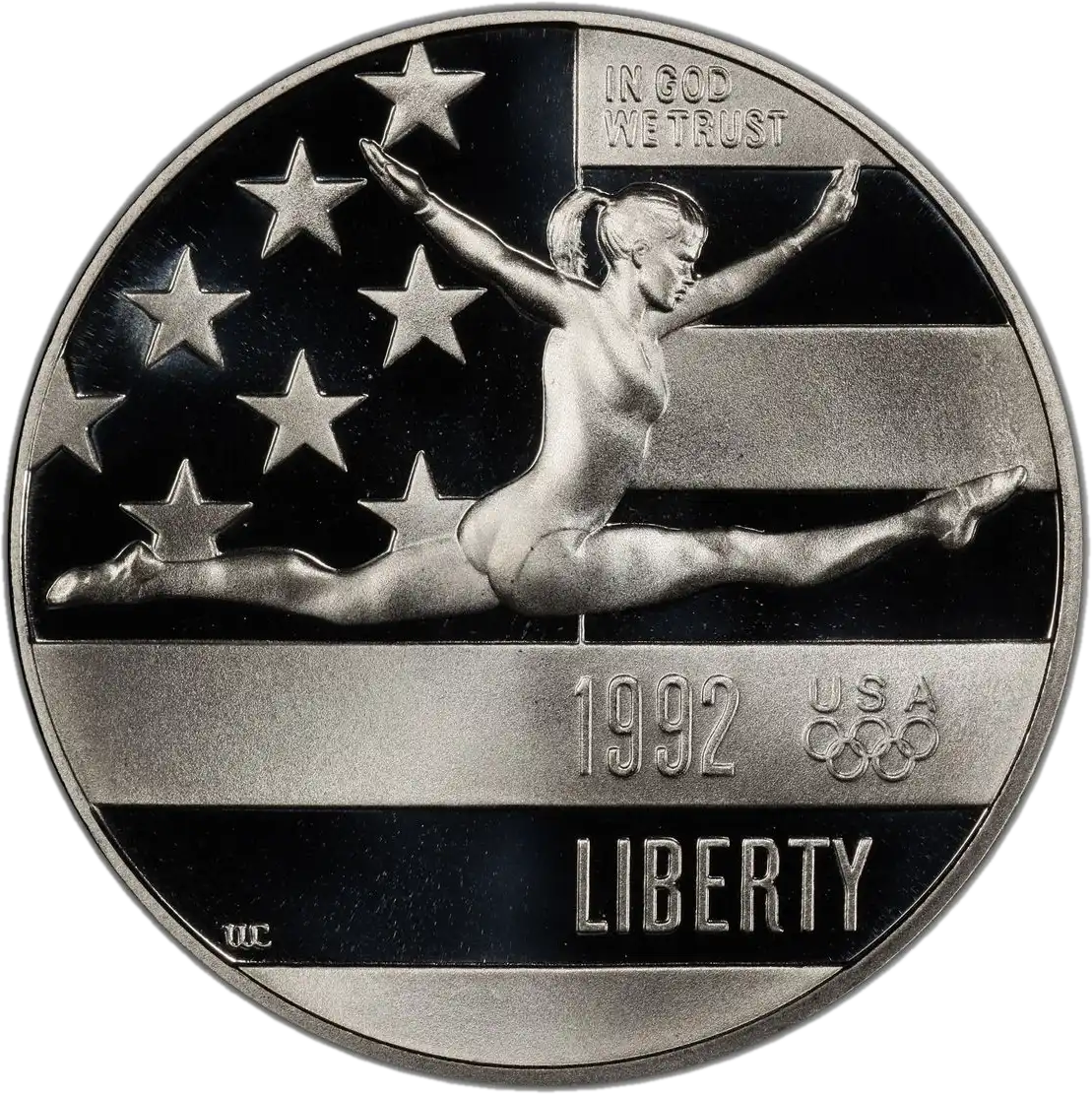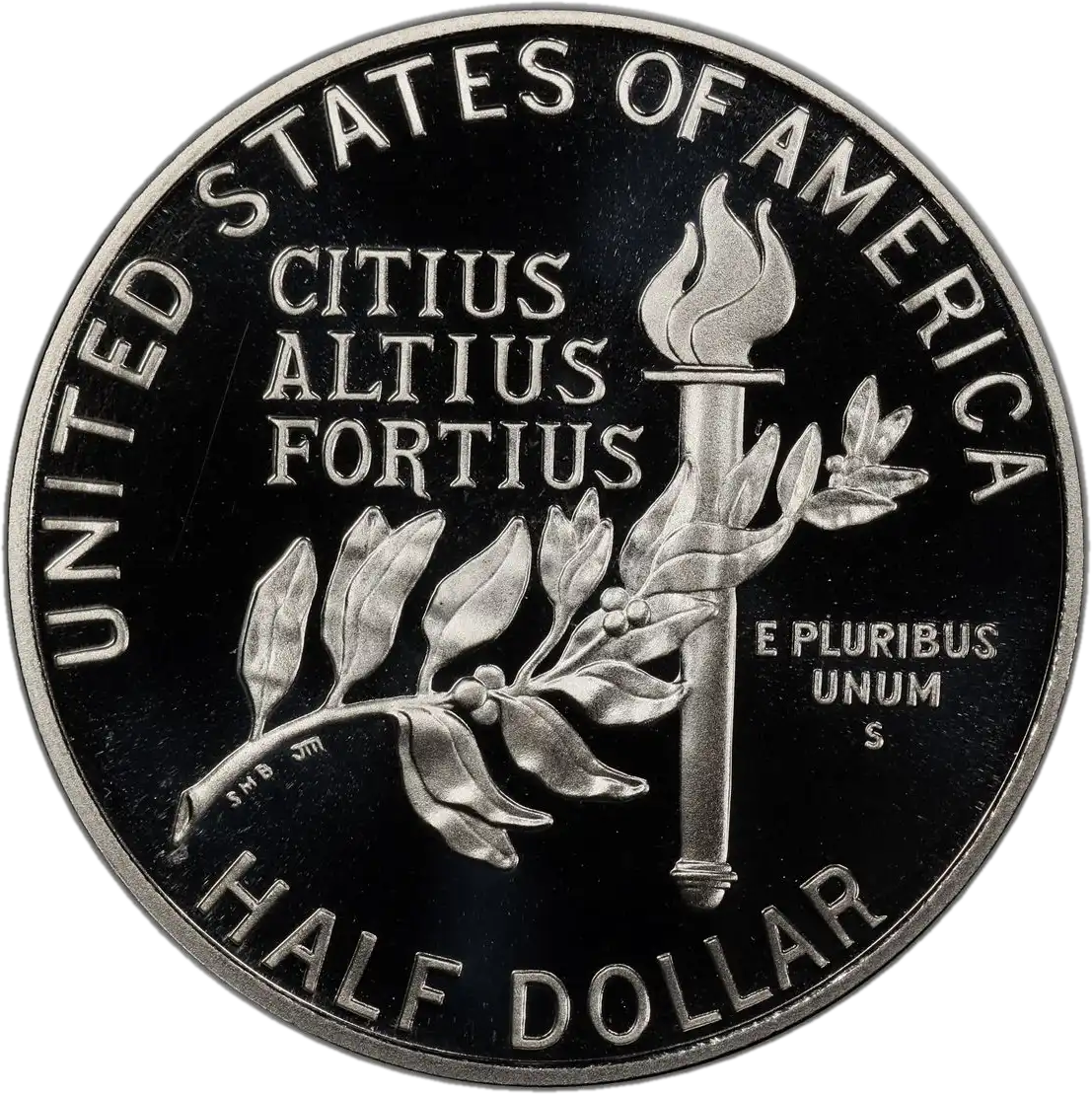USA ½ dollar Olympics (France and Spain) 1992-S-Proof
USA, San Francisco


Rarity
Uncommon
Attributes of Coins
| Region | USA |
|---|---|
| Denomination | ½ dollar |
| Krause number | KM# 233 |
| Mintage | 519,645 |
| Metal | Copper-Nickel plated Copper |
| thickness | 2.15 mm |
| diameter | 30.61 mm |
| weight | 11.34 g |
Obverse:

Flags
Olympic Games
People
Creators:
William Cousins (WC)
1992
IN GOD WE TRUST
LIBERTY
USA
Reverse:

Olympic Games
Symbols
Creators:
Steven M. Bieda (SMB)
CITIUS ALTIUS FORTIUS
E PLURIBUS UNUM
HALF DOLLAR
UNITED STATES OF AMERICA
Introduction of Coins
Commemorative coins for the Olympic Games of 1984 and 1988 had proved to be good fundraisers for the U. S. Olympic Training Center, so a similar program was planned for the 1992 event. A bill passed October 3, 1990 provided for up to 6 million clad half dollars, 4 million silver dollars and 500 thousand gold half eagles. In an open contest for this series which saw 1,107 entries, the half dollar design turned out to be a split decision. The obverse was awarded to U. S. Mint Sculptor-Engraver William C. Cousins, who portrayed a female gymnast in mid air superimposed over the American flag. The USA Olympic logo is seen beneath the gymnast's right leg, along with the date of coining. The reverse of the half dollar was by artist Steven Bieda. In it the Olympic torch is overlaid with the olive branch of peace, while the Latin inscription "CITIUS, ALTIUS, FORTIUS" (Faster, Higher, Stronger) appears above the branch, balancing the design. The remaining inscriptions are all statutory, with the coin's mintmark appearing below the legend "E PLURIBUS UNUM" and seeming to be a part of it ('P' for uncirculated coins and 'S' for the proof edition). The silver dollar features an obverse design by John R. Deecken that was sculpted by Chester Y. Martin of the U. S. Mint. Its depiction of a baseball pitcher in his windup was quickly identified by fans of the sport as having come from a 1991 baseball card of Texas Rangers' star Nolan Ryan. The USA Olympic logo appears to the left of the pitcher, while the date of coining is below him within an exergue. Marcel Jovine provided the reverse imagery of the Union Shield flanked by olive branches and surmounted by the USA Olympic logo. The coin's mintmark is to the right of the rightmost olive branch ('D' for uncirculated pieces and 'S' for the proofs), while the rest of the design includes only statutory inscriptions. A unique feature of the silver dollar is that it includes the phrase "XXV OLYMPIAD" four times on the edge impressed into the reeding, the latter feature being more closely spaced than usual to make the lettering readable. The half eagle's obverse displays a sprinter running toward the viewer with an American flag behind him. The USA Olympic logo is at left, the date of coining at right. This design was submitted by James Sharpe and sculpted by the U. S. Mint's own T. James Ferrell. The reverse by James Peed features an American eagle surmounted by the USA Olympic logo. The 'W' mintmark of West Point is seen to the right of the eagle, and the balance of both sides is comprised of statutory inscriptions. The U. S. Mint once again offered pre-issue discount prices for both editions of the three denominations. The uncirculated half dollar was $6 initially and $7.50 after the pre-issue period, while the proof edition was priced at $8.50 and $9.50, respectively. Both coins sold reasonably well, though their combined net sales fell short of one million. The silver dollars, priced at $24 and $29 for the uncirculated coins and $28 and $32 for the proof pieces, sold in similar quantities to the half dollars. Just over 100 thousand half eagles were distributed of the two editions, priced at $185 and $215 for the uncirculated version and $195 and $230 for proof pieces. As is typical for modern U. S. commemoratives, the proof coins were preferred by most buyers across all three denominations.Read More













